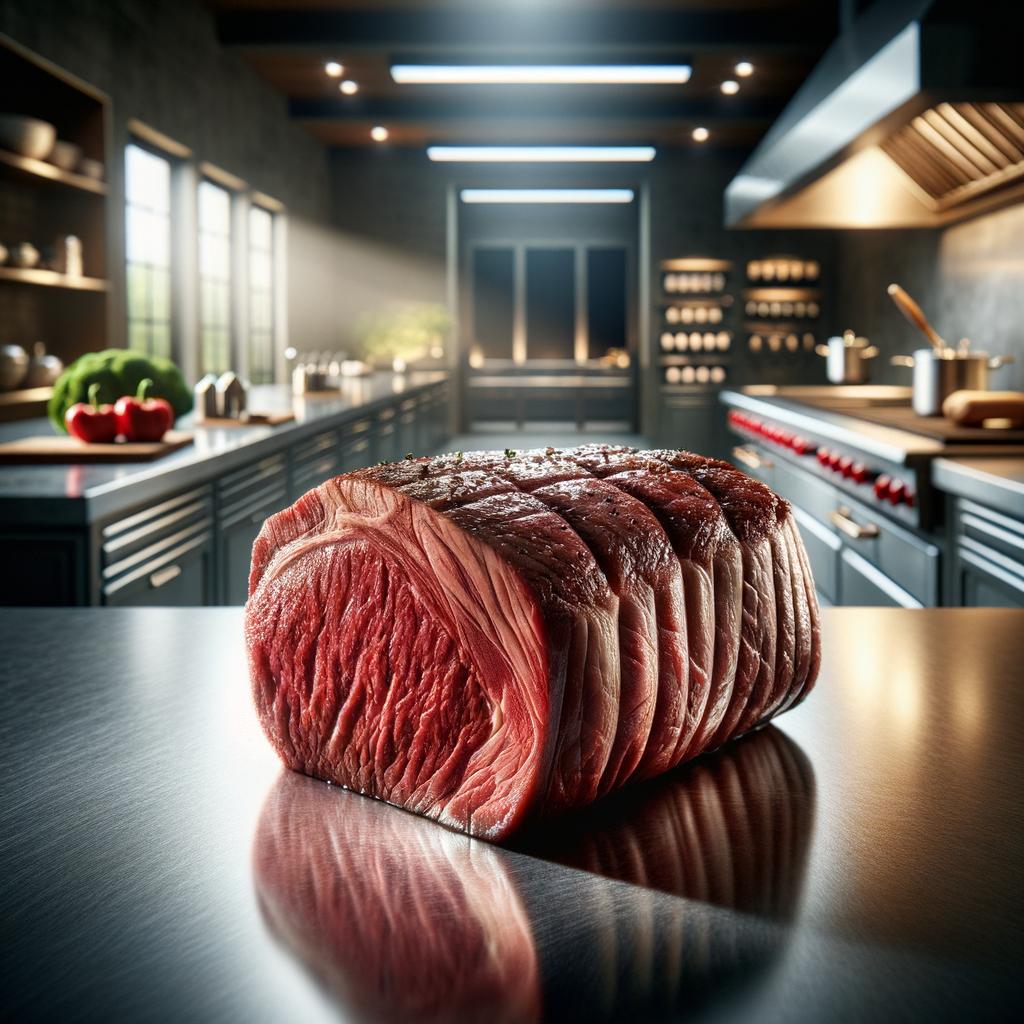Chateaubriand Cut of Beef

Description
The Chateaubriand is a true crown jewel in the world of gastronomy. This luxurious cut of beef is a thick slice from the tenderloin, which is the most tender part of the cow. The Chateaubriand is a large cut, usually enough to serve two, and it is characterized by its fine-grained, buttery texture that almost melts in your mouth. Its flavor is subtle yet profound, with a rich beefy taste that is enhanced by its natural juices. The Chateaubriand stands out from other cuts due to its exquisite tenderness, lean yet succulent nature, and the romantic aura that surrounds it.
Primary Uses
The Chateaubriand is a star of French cuisine, traditionally prepared by roasting and served with a rich Béarnaise sauce. It is also popular in other cuisines, often grilled or broiled to perfection and served with a variety of sauces and accompaniments that complement its delicate flavor. Beyond its culinary use, the Chateaubriand is often associated with special occasions and romantic dinners, symbolizing a sense of luxury and celebration.
History
The Chateaubriand traces its origins back to the early 19th century, named after Vicomte François-René de Chateaubriand, a French writer and diplomat. The story goes that Chateaubriand's chef invented the dish, intending to please his employer's refined palate. Over the years, the Chateaubriand has evolved from a specific preparation method to represent a cut of beef that is synonymous with indulgence and sophistication. It carries with it a sense of historical nostalgia, harking back to the opulence of French aristocracy.
Nutritional Information
The Chateaubriand, like other cuts of beef, is a good source of protein, providing essential amino acids necessary for body repair and maintenance. It also contains a range of vitamins and minerals, including zinc, selenium, and B-vitamins, particularly B12, which is crucial for nerve function and the production of DNA. Despite its rich taste, the Chateaubriand is relatively lean, with less fat compared to ribeye or sirloin cuts. However, like all red meats, it should be consumed in moderation as part of a balanced diet to avoid potential health risks associated with excessive consumption. As a food historian and nutritionist, I can't help but marvel at how this cut of beef, steeped in history and romance, also carries with it a wealth of nutritional benefits.

